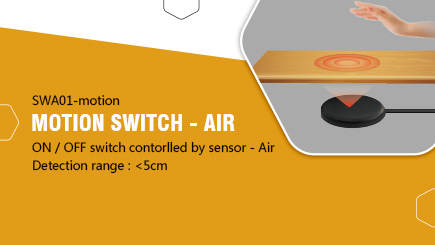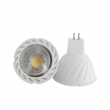LED chip important parameters and structural analysis
2017-05-23 10:08:11
LED chip is a semiconductor light-emitting device LED core components (LED lights), LED light principle is mainly LED chip P-N junction. In general, the semiconductor chip consists of two parts, part of the P-type semiconductor, in which the dominant hole inside, the other end is the N-type semiconductor, mainly electronic here. But when the two semiconductors are connected, they form a P-N junction (LED TV) between them.
When the current through the wire acting on the wafer, the electrons will be pushed to the P area, in the P area with the hole in the electronic complex, and then will be in the form of photon energy and light wavelength is light color, (LED display) determined by the material forming the PN junction.
LED chip's main function is: you can directly into the electric light, it can be said that the heart of LED. This article briefly introduces the basic knowledge of LED chip, namely: LED chip classification, structure, features and important parameters and so on.
The LED chip is mainly composed of arsenic (AS), aluminum (AL), gallium (Ga), indium (IN), phosphorus (P), nitrogen (N), strontium (Si) For monocrystalline silicon.
LED chip classification
Uses: According to the use of high power led chip, low power led chip two;
Color: mainly divided into three kinds: red, green, blue (white raw materials);
Shape: generally divided into square films, two discs;
Size: low-power chip is generally divided into 8mil, 9mil, 12mil, 14mil and so on
LED chip structure introduced
Different LED chips, the structure is similar, with the epitaxial chip substrate and doped epitaxial semiconductor materials and transparent metal electrodes and other components
LED chip important parameters

1. Maximum reverse voltage VRm: The maximum allowable reverse voltage, ie, the breakdown voltage. Beyond this value, the light emitting diode may be damaged by breakdown.
13. working environment topm:
2. Forward operating voltage VF: The operating voltage given in the parameter table is given at a given forward current. Generally measured at IF = 20mA. The positive operating voltage of the light emitting diode is 0.4 ~ 3V. When the outside temperature rises, VF will drop.
3.V-I characteristics: the relationship between the voltage and current of the light-emitting diode, the positive voltage is less than a certain value (called the threshold), the current is very small, no light. When the voltage exceeds a certain value, the forward current increases rapidly with the voltage, light.
4. Luminous intensity IV: luminous intensity of light-emitting diodes usually refers to the normal (for cylindrical tubes refers to the axis) in the direction of the luminous intensity. If the radiation intensity in this direction is (1/683) W / sr, then light 1 candela (symbol cd). As the general LED light-emitting diode strength is small, so the luminous intensity commonly used candlelight (candela, mcd) as a unit.
5. LED light angle: -90 ° - + 90 °
6. Half angle θ1 / 2 and viewing angle:
Θ1 / 2 means the angle at which the luminous intensity value is half the axial intensity value and the light-emitting axial direction (normal direction).
7. Full shape: According to the LED luminous solid angle conversion angle, also known as the plane angle.
8. Perspective: refers to the maximum angle of LED light, according to different perspective, the application is also different, also known as light intensity angle.
9. Maximum forward DC current IFm: Allows the maximum positive DC current to be added. Exceeding this value can damage the diode.
The ambient temperature range of the light emitting diode can work normally. Below or above this temperature range, the light emitting diode will not work properly and the efficiency will be greatly reduced.
10. Allowable power consumption Pm: The maximum value of the product that allows the positive DC voltage to be applied across the LED and the current flowing through it. Beyond this value, LED fever, damage.
11. Spectral half-width Δλ: It represents the spectral purity of the arc tube.





